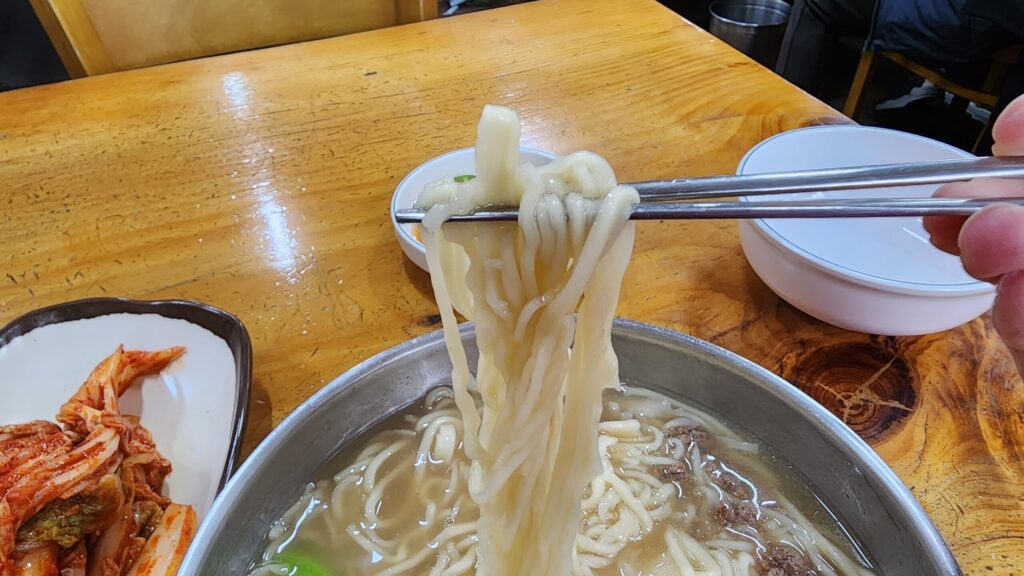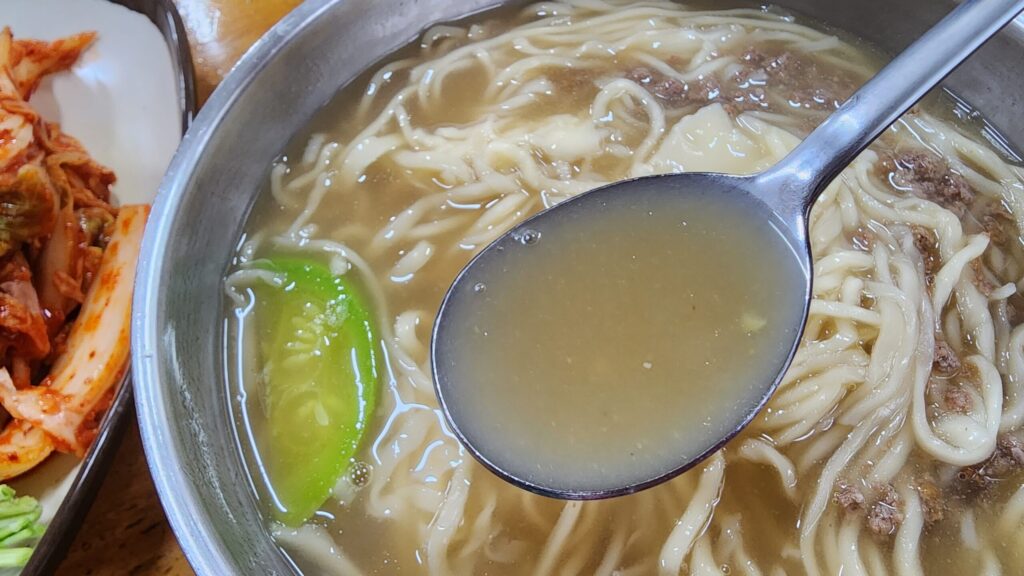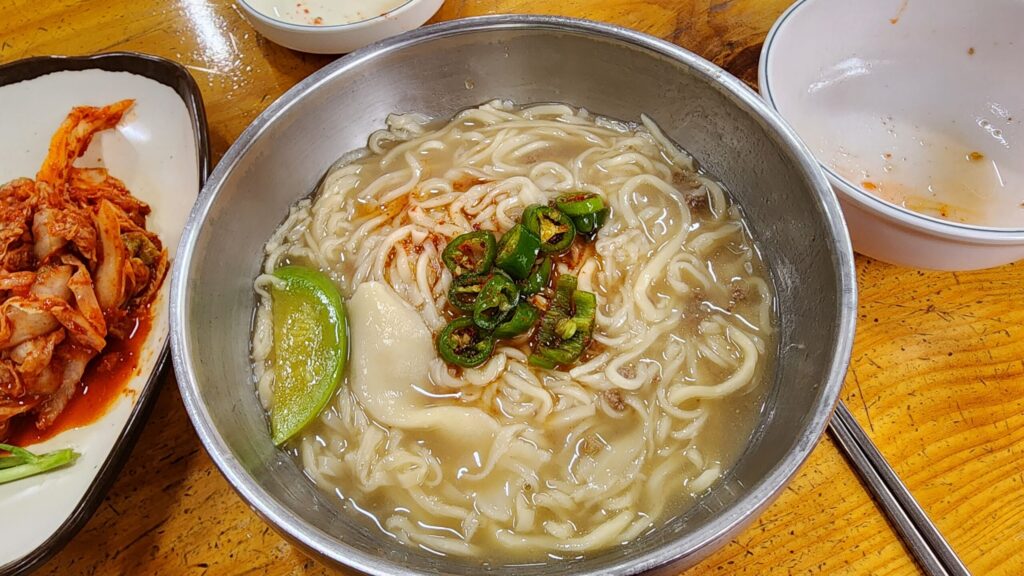
A Bowl of Warm Comfort — MINSOK SON GUKSU’s Beef Bone KALGUKSU
KALGUKSU is one of Korea’s most beloved noodle dishes.
If you break the name down, “KAL” means knife, and “GUKSU” means noodles—because the dough is traditionally rolled out and sliced by hand with a knife.
What makes KALGUKSU so interesting is how much the broth can vary depending on the ingredients used.
Everyone has their favorite version, and locals often seek out places that serve their preferred broth base—whether it’s anchovy, clam, beef bone, chicken, doenjang (fermented soybean paste), or gochujang (spicy chili paste).

Today’s Spot: Beefy and Deep
The place I visited today is called MINSOK SON GUKSU—a fairly common name in Korea.
This particular location makes their KALGUKSU using a deep, rich beef bone broth (SAGOL in Korean), which gives the soup a cloudy, slightly brown color and full-bodied flavor.

Just One Side Dish, but That’s Enough
While Korean meals are known for offering lots of banchan (side dishes), some dishes are perfectly fine with just one.
KALGUKSU is one of those.
Here, it’s served with freshly made BAECHU KIMCHI, a spicy napa cabbage kimchi.
Because this type of kimchi is only lightly fermented and heavily seasoned, it’s technically a GEOTJEORI—a fresh-style kimchi that’s more vibrant and spicy than aged varieties.
Its bold flavor pairs perfectly with the clean, mild taste of KALGUKSU, and honestly, that one side dish is more than enough.


What’s in the Bowl?
The toppings are simple but satisfying: minced beef, zucchini, and those iconic hand-cut white noodles swimming in a rich brown broth.
The noodles are thick but not heavy, with a slightly uneven texture that gives them a rustic feel.
Once they soak in the warm broth, they become soft, chewy, and absolutely comforting.
The broth has a meaty depth, but it’s not overpowering—it feels hearty yet clean at the same time.

A Mild Twist of Heat
A small dish of chili sauce comes on the side.
Add a spoonful to your soup, and you won’t get much heat—but you will get a tangy kick.
It seems like the chili was pickled before being mixed into the sauce, giving it that sharp, slightly sour flavor.
It’s a simple touch that rounds out the whole bowl.
